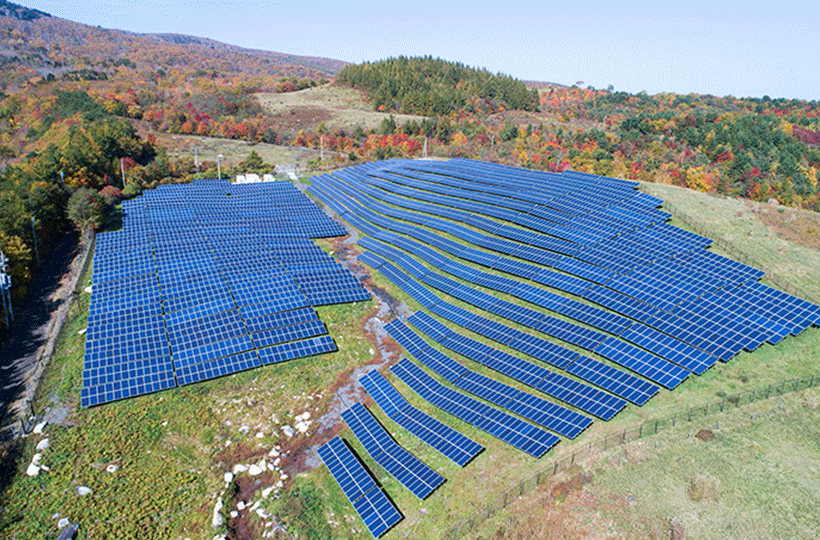- TOP
- Sustainability
- Initiatives for Social Issues
 Initiatives for Social Issues
Initiatives for Social Issues
Applying environmental DNA technology in biological surveys
Environmental DNA (eDNA) is organismal DNA that can be found in the environment, such as in oceans, rivers, lakes, and soil. Our analyses focus on eDNA in aquatic environments. By analyzing eDNA, we can determine the types of organisms that live there. Because the technology only requires water sampling, its use in biological surveys is drawing attention as an innovative, labor-saving survey method that can reduce environmental impact in comparison to conventional biological survey methods.
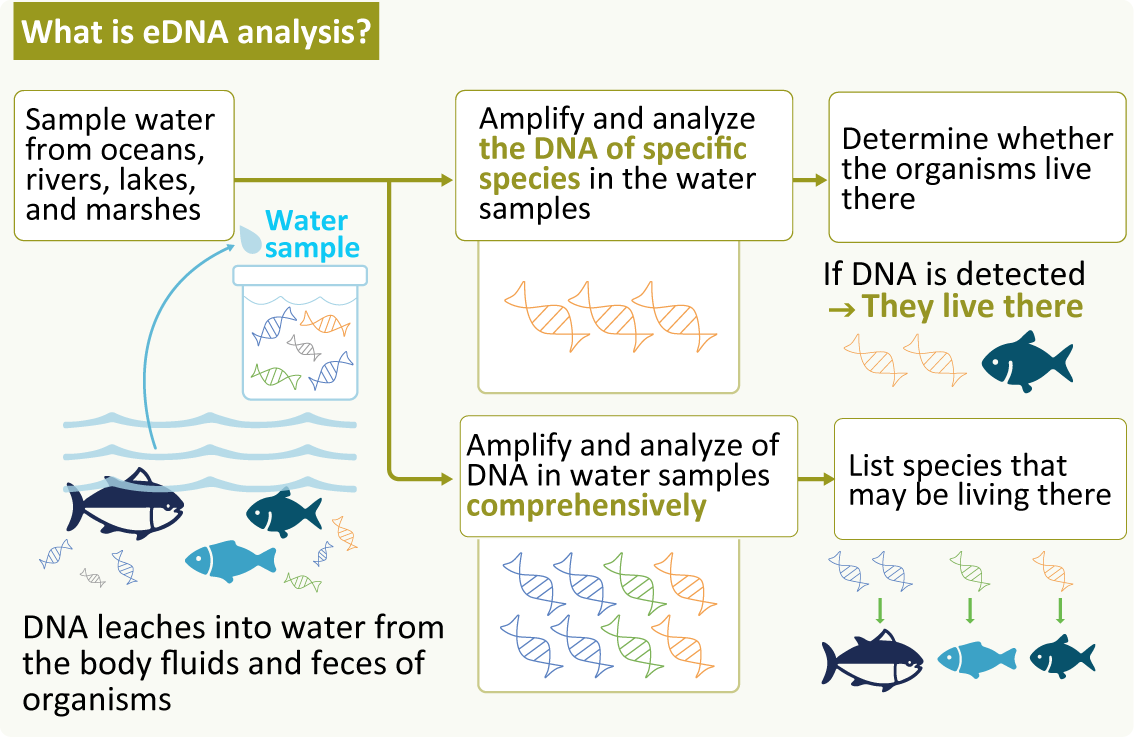
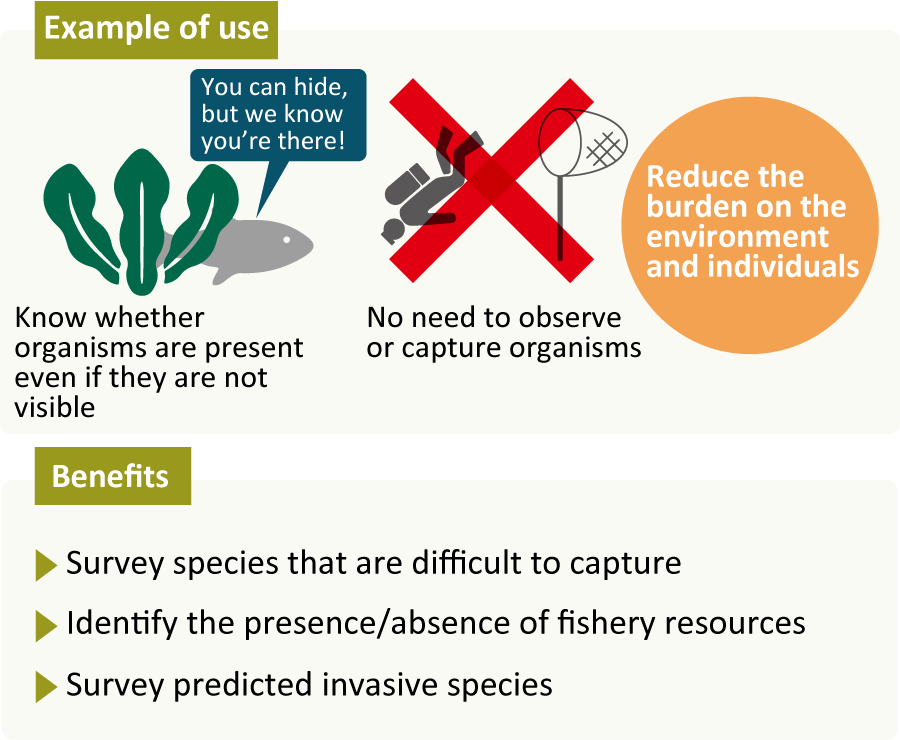
Hydropower generation as renewable energy
The utilization of nuclear power plants in Japan dropped significantly following the Great East Japan Earthquake, and the country has since shifted to promoting renewable energy. We have also been reevaluating the value of hydropower generation. However, compared to other renewable energy sources such as solar and wind power, public understanding of hydropower is not as good as it could be. Japan has high annual precipitation and is rich in water resources. The country's mountainous topography provides favorable conditions for hydropower generation. And yet despite these conditions, hydropower generation only accounts for about nine percent of the total electricity generated.
In light of the energy situation in Japan, we need to reevaluate the value and effectiveness of hydropower generation, as well as consider the effective use of existing dams. In November 2019, we published a book, Now is the Time to Examine the Value of Hydropower Generation: Harnessing its Benefits for the Future (in Japanese only; edited by the Research Center for Sustainable Communities), in which we identified three challenges facing hydropower generation in Japan today and proposed solutions.
Challenge 1 : Communicating the value of hydropower generation
Challenge 2 : Promoting hydropower that contributes to regional development
Challenge 3 : Utilizing existing dams in a comprehensive manner
[What can we do to utilize hydropower generation more effectively?]
We believe that it will be possible to utilize hydropower generation more effectively and efficiently for a longer period of time by implementing the following technologies that we have accumulated over the years:
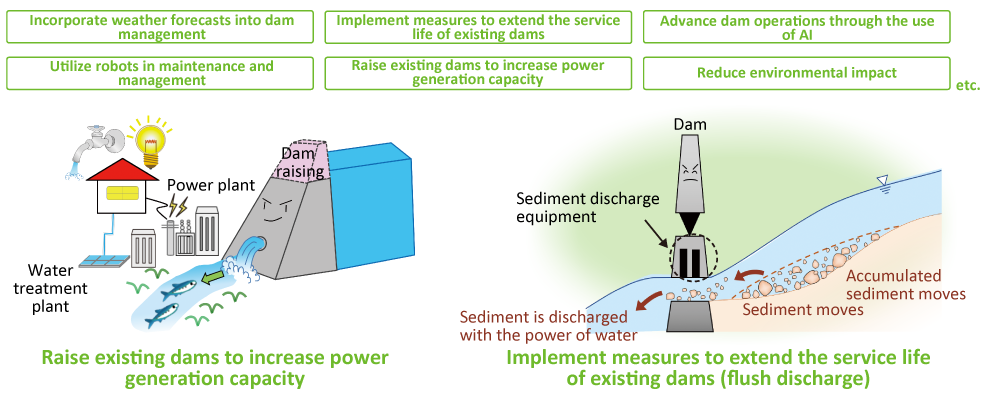
Participating in a wood biomass project aimed at sustainable community development
We have invested in Vesta CHP Co., Ltd., a company that is operating a wood biomass project that serves as the leading model in Japan for achieving "local production for local consumption" of wood resources. Together, we are producing and selling wood fuel (pellets) and supplying heat to a residential building using wood fuel, in collaboration with local forestry entities.
For such a project to be viable, there must be a system in place to utilize the wood to its fullest extent—a system that includes felling the trees, using the lumber for building materials, and using wood residues for energy. Globally, there is a need to decarbonize energy systems and build sustainable societies as defined by the SDGs. The wood resources used in this project are local energy resources. By making use of these resources, the wood biomass project will have a positive impact on the environment, economy, and society, and is expected to become a model project that embodies the SDGs.
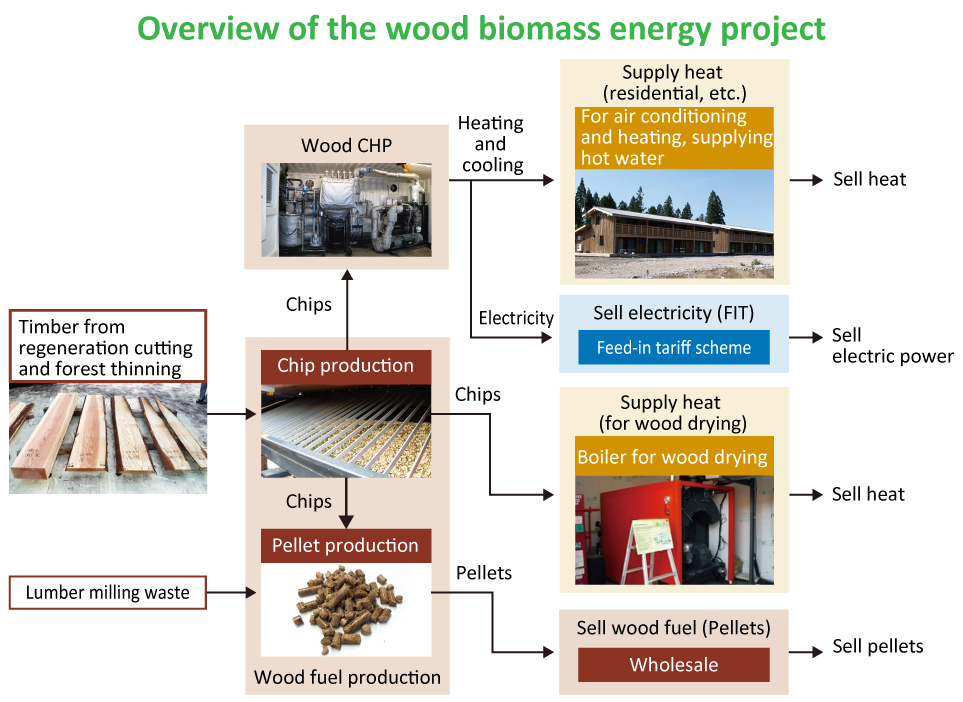
Concrete actions for green infrastructure through disaster mitigation measures and environmental conservation and creation
In light of the increasingly severe damage caused by disasters in recent years, the Ministry of Land, Infrastructure, Transport and Tourism (MLIT) has changed its approach to flood control, shifting toward the promotion of a disaster mitigation policy based on "River Basin Disaster Resilience and Sustainability by All." Accordingly, in order to achieve a balance between crop production on agricultural land and the creation of diverse secondary environments, we have been working with various stakeholders, including academics, MLIT, local governments, local residents, and NPOs, to study methods of implementing the functions performed by nature that reduce disaster risk. In our studies, we have been accumulating and implementing technologies that utilize environmental elements to efficiently link disaster prevention measures to socioeconomic activities and the environment, keeping in mind the concept of green infrastructure development.
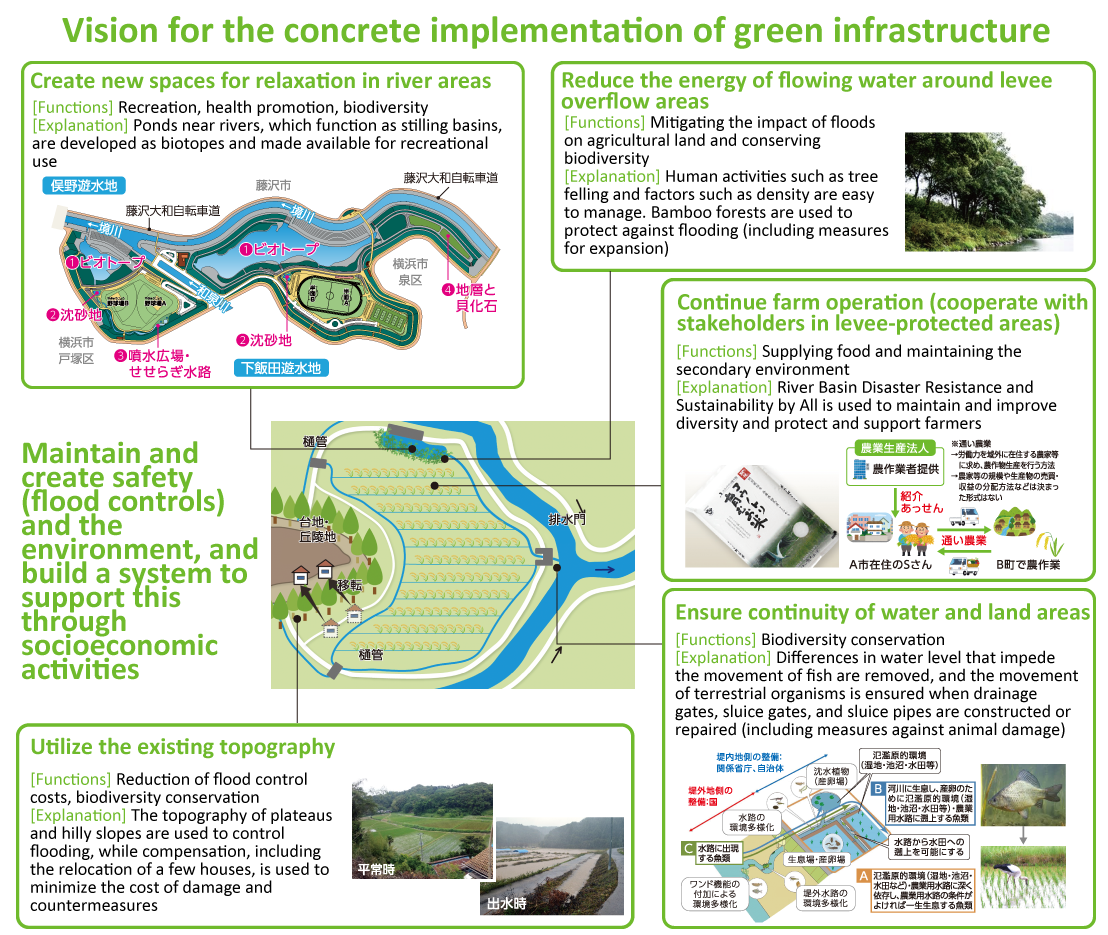
Participating in smart community building with the aim of contributing to earthquake reconstruction
In recognition of the fact that our proposal to build a smart community in Kamaishi City contributed to the city's reconstruction and revitalization, together with Kamaishi City and Kamaishi Gas Co., Ltd., we were awarded the Chairman's Prize at the New Energy Awards (hosted by the New Energy Foundation) for our "contribution to regional symbiosis." The mega solar project implemented by the Special Purpose Company (SPC) we established in Kamaishi City is promoting initiatives for sustainable community development, such as donating a portion of its profits to relief efforts for typhoon damage in 2019.
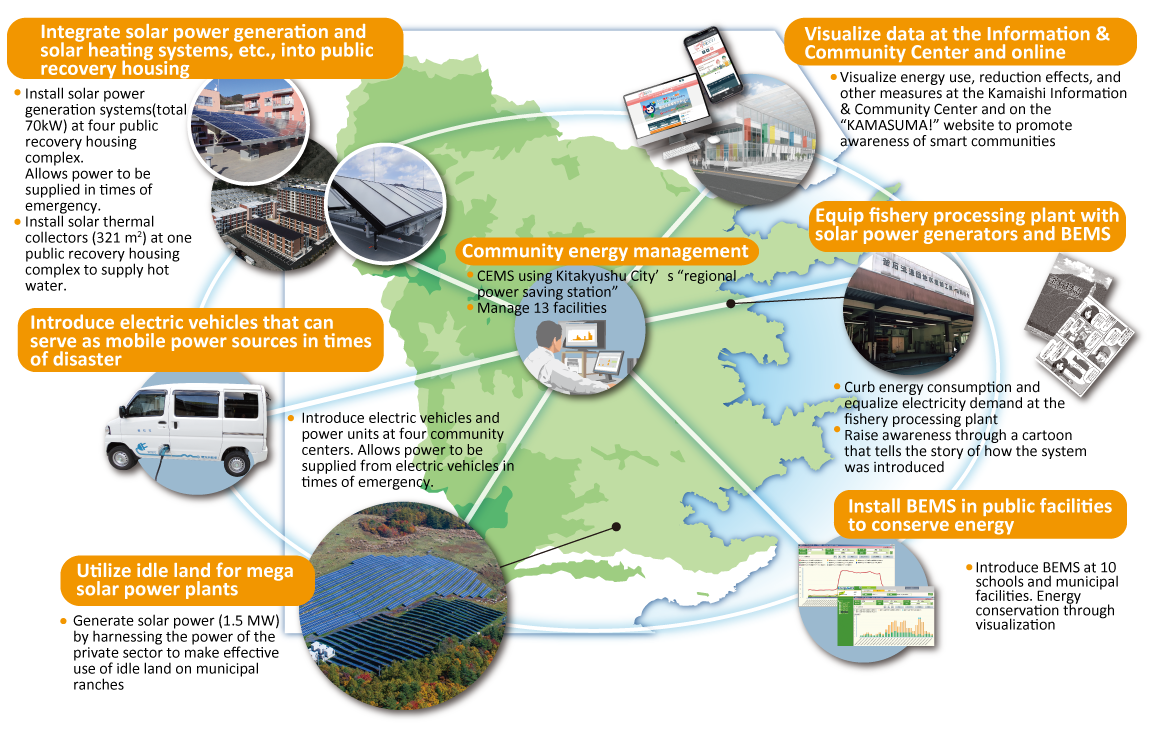
Kamaishi Naranokidaira Solar Power Plant
In order to build a low-carbon society, we are implementing projects to develop renewable energy facilities, smart communities, and hydrogen-powered communities. In the field of renewable energy, we have founded the Kamaishi Naranokidaira Solar Power Generation Co., Ltd. (Tadakoecho, Kamaishi City), which is engaged in a solar power generation project that effectively utilizes idle land in Kamaishi City.
